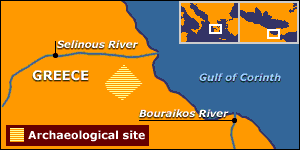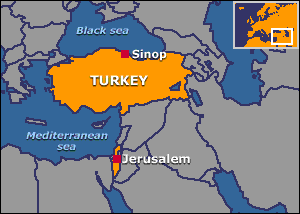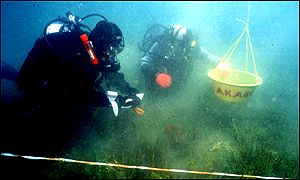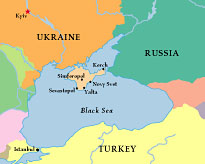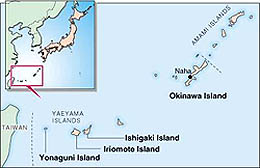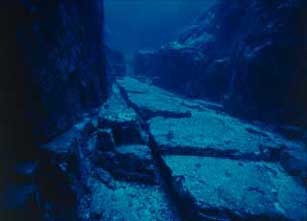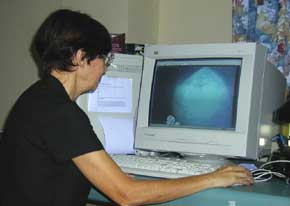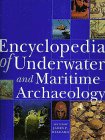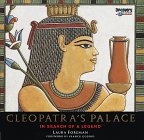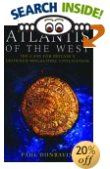|
text translation service for many worldwide languages
Over the past decade or so there have been numerous discoveries about the ancient world, many of which cannot be explained by the traditional views of prehistory as interpreted by mainstream archæologists. It would be impossible to keep abreast of them all, but many have major implications for our greater understanding of the cataclysmic events of antiquity which are remembered in the stories of Atlantis, the Deucalian flood, and the flood of Noah that have been passed down from generation to generation in both oral and written traditions since time immemorial …
Of course, there are so many ancient tales of flooded kingdoms, cataclysmic inundations and sunken lands from more or less every corner of the world, that it is difficult to avoid the basic question of whether or not they all refer to the same cataclysm, or a series of cataclysms that happened over several millennia from around 15,000 BC to around 1,500 BC? Many scientists now believe that there were a series of rapid sea-level changes which marked the abrupt end of the last Ice Age, especially at the time of Plato’s original date of 9,600 BC where he placed the supposed destruction of Atlantis.
The melting ice-sheets, it is believed by ‘uniformitarians’, were sufficient to account for these sea-level rises, but other scientists are looking at the possibility that supermassive quantities of water-ice were rudely delivered to the Earth by a giant comet which passed close to the Earth and the Moon at the end of the Pleistocene era – again at around 11,500 years ago. This ‘event’ was coeval with the world’s major mountain ranges – such as the Alps, the Andes, and the Himalayas – attaining their present elevations, whilst many of the world’s low-lying basin areas collapsed in an abrupt series of crustal deformations caused by the gravitational effects of a celestial body in such close proximity to Earth. Many of the world’s ‘deluge traditions’ refer to a celestial agency as having been the cause of the global floods, as well as the major rifting of Earth’s crust in numerous locations, and possibly also causing a tilt in the Earth’s rotational axis which brought about the seasons and the frigid polar regions as we now know them. The mass extinctions which marked the end of the Pleistocene and the start of the present Holocene era are also dated to between 10,000 and 12,000 years ago, as are the unconsolidated jumbles of now extinct land animals, marine lifeforms, and Pleistocene flora which comprise the many types of ‘drift deposits’ found jammed with extreme force into caves and rock fissures worldwide. Many species from widely differing climatic zones and habitats lie side-by-side in bits and pieces evidencing the violent nature of their common demise, and careful analysis of these suggest the cause as being not the Ice Age of the uniformitarians, but the tumultuous swirling waters of mega-tsunami. Either way, the major question which cannot any longer be reasonably avoided by serious prehistorical researchers must be:
“What more evidence of ancient civilisations, and of the sea-faring peoples of world-wide mythology, remains to be discovered beneath the waves on the continental shelves all around our planet?” …
more underwater discoveries …
Terrestrial Archæology & Solar System History News Headlines Archive
– updated daily –
A terrace for crops, a long road and an 800-metre (2,600 feet) long wall was also found under the waters of the lake, sited in the Andes mountains between Bolivia and Peru, the BBC reported:
“The lake has long drawn fascination with various legends around it, including one of an underwater city called Wanaku and another of Inca gold lost by the Spanish. The Incas also regarded the lake as the birthplace of their civilisation, and in their myth, the Children of The Sun emerged out of the waters.” The complete findings of the 30-member team, backed by the scientific group Akakor Geographical Exploring, are to be published in November 2002.
“Interactive Dig: Beneath the Black Sea”
Archaeology Magazine, USA – August, 2000
Feel free to send any questions you may have to [email protected], and I’ll try to answer them in my next posting. Davay! We’re off!”
“Giant burp snuffed out ocean species”
Independent Online, South Africa – July 27, 2000
“Huge reservoirs of methane trapped beneath the ocean floor rapidly escaped during prehistoric global warming and depleted much of the sea’s oxygen, according to new research into why many forms of life suddenly vanished 183 million years ago.
The findings, reported in Thursday’s issue of the journal Nature, shed new light not only on the disappearance of as many as 80 percent of some deep-sea species but also a process suspected in other prehistoric mass extinctions.
The study also raised questions about today’s sea floor reservoir of methane hydrate, which the federal government plans to study as a possible energy source.” [Full Story]
“Is the lost continent of Mu in Okinawa?”
The Japan Times, Japan – July 19, 2000
But others, including a noted geologist, are skeptical, saying the geometrical shapes of the stones may be due to a unique, but natural, form of erosion.
Recent studies of the phenomenon — such as that by Masaaki Kimura, a professor in the Department of Physics and Earth Sciences at the University of the Ryukyus — have only fueled the debate.”
“20,000 Ancient Coins Unearthed from Bottom of Lake”
June 26, 2000, People’s Daily, China: “China has unearthed over 20,000 ancient coins during the dredging of West Lake in the picturesque city of Hangzhou in east China’s Zhejiang Province.
The coins belonged to several dynasties, the earliest dating backing to the Warring States Period (475-221 BCE).
Numismatists and archaeologists from both at home and abroad have shown great interests in these coins, some of which are rare.” [Full Story]
“Hundreds of sunken monuments, discovered”
June 05, 2000, Arabic News, Egypt: “The European Institute for Sunken Antiquities’ mission working in Abu Qir, Alexandria managed to detect and spot the course of the Nile’s most important branches that sank hundreds of years ago.
The Canubian branch of the Nile, attributed to the ancient port city of Canub, now Abu Qir, had been submerged in the wake of the violent temblor that rocked Alexandria long times ago.
In an international news conference held early Saturday in Alexandria, Franc Godeo, head of the mission, said the Egyptian-French Mission for Sunken Antiquities used satellite survey and detection equipment and depth scanning instruments in spotting the areas where the monuments are perching.” [Full Story]
“Ancient Greek city discovered under Alexandria waters”
June 03, 2000, Arabic News, Egypt: “The French-Egyptian Archaeological Mission discovered the Greek city of Herculium under Alexandria sea. The Mission, led by French Franc Godeo, found the lost city of Herculium the second Greek city found under the water of Alexandria.
The first was the city of Menotus discovered by Prince Omar Tossun in 1934. Some six ancient Greek cities sank under the waters of the north coast of Egypt when a major earthquake rocked Alexandria in the ancient times.
The discovery ushers in the unraveling of the whole ancient Abu Qir, which used to be known in the past as Canub. Canub was dedicated to the worship of God Osoris and dates back to the Central State, 20 years before Christ. it was called the Graeco-Roman Paris of Egypt.” [Full Story]
“Divers find Pharaohs’ lost city”
June 03, 2000, BBC News Online, UK: ” Underwater archaeologists working off the Egyptian coast have discovered an entire submerged city dating from ancient times.
At a news conference in Alexandria, the French marine archaeologist, Franck Goddio, revealed the first evidence of what is believed to be the ancient city of Herakleion.
His divers have located a lost world of temples, houses and colossal statues.” [Full Story]
|
|
… exclusive …
October 2002 Morien Institute illustrated interview with Professor Masaaki Kimura of the University of the Ruykyus, Okinawa, Japan, regarding the discovery of:
“Megalithic structures found underwater off the coast of Yonaguni-jima, Japan”
… exclusive …
June 2002 Morien Institute illustrated interview with Dr Paul Weinzweig of Advanced Digital Communications, Havana, Cuba, regarding the discovery of:
“Megalithic urban ruins discovered off the coast of Cuba”
Books about Underwater Discoveries
“Underworld”
Graham Hancock
EU English Edition
“From Graham Hancock, bestselling author of Fingerprints of the Gods, comes a mesmerizing book that takes us on a captivating underwater voyage to find the ruins of a lost civilization that’s been hidden for thousands of years beneath the world’s oceans. While Graham Hancock is no stranger to stirring up heated controversy among scientific experts, his books and television documentaries have intrigued millions of people around the world and influenced many to rethink their views about the origins of human civilization.
Now he returns with an explosive new work of archaeological detection. In Underworld, Hancock continues his remarkable quest underwater, where, according to almost a thousand ancient myths from every part of the globe, the ruins of a lost civilization, obliterated in a universal flood, are to be found.”
“Encyclopedia of Underwater and Maritime Archaeology”
James Delgado (Editor)
EU English Edition
“This encyclopedia is the first comprehensive reference book on the discovery and recovery of underwater archaeological remains around the world and across time. Written by archaeologists and other scientists who have made the discoveries, it offers a wealth of authoritative and accessible information on shipwrecks, drowned cities, ritual deposits, and other relics of our submerged past.
The volume’s 450 alphabetically arranged entries cover sites from prehistory to the modern era (including Titanic), legislation and legal issues, organizations, nations and regions, research themes, and technology and techniques. Length generally ranges from two paragraphs for reef netting and Southampton Centre for Maritime Archaeology to about four pages for Great Lakes and remote sensing.”
“Cleopatra’s Palace: Laura Foreman
EU English Edition
“In 30 b.c., against the backdrop of Alexandria, Egypt, one of the most majestic of all ancient cities, a great queen proudly and defiantly took her life. More than two thousand years later, the world remains fascinated and haunted by this most intriguing woman, Cleopatra VII, yet practically everything we know about her is based on ancient text fragments, literature, and myth.
Gifted storyteller Laura Foreman brings Cleopatra’s legendary tale to life, from the founding of Alexandria by Alexander the Great, to Cleopatra’s ascent to the Egyptian throne amid treachery and betrayal, to her passionate alliances with Julius Caesar and Mark Antony and her doomed battle against Octavian.
But the legend doesn’t end there. Cleopatra’s Palace also presents the astounding recent findings of world-renowned underwater explorer Franck Goddio, who, with his team of underwater archaeologists, has succeeded in mapping the Royal Quarter of Ancient Alexandria, long submerged beneath the Mediterranean by cataclysmic earthquakes early in the millennium. In a fascinating narrative illustrated by exclusive underwater images, the expedition’s successes are presented, including the discovery of such artifacts as jewelry, statues, sphinxes, rare pottery, and an ancient shipwreck, as well as architectural remains that were found on the site of this magnificent drama.”
“The Sea of Galilee Boat: An Extraordinary 2000-year-old Discovery” Shelley Wachsmann
EU English Edition
“This remarkable true story recounts one of the great discoveries of the century: finding a 2000-year-old boat from the Sea of Galilee. Shelley Wachsmann, a respected nautical archaeologist, shares the joy and drama he felt in discovering and excavating the first ancient boat from this biblical location.
The saga of tenderly extracting this extraordinary boat from the earth, protecting its timbers, and restoring it to health is a compelling tale on its own. Wachsmann punctuates the absorbing details of preserving this artifact with the rich history that surrounds the Sea of Galilee, making this a uniquely enduring and personal work.”
“Atlantis of the West:
Paul Dunbavin
EU English Edition
“Do Welsh legends of lost cities beneath the sea match Plato’s descriptions of the island civilization of Atlantis? Do Irish myths of a golden age when the eastern Irish Sea was a flowery plain describe the same place Herodotus said disappeared beneath the waves during a single day and night of geological upheaval millennia before Ancient Greece? Author and researcher Paul Dunbavin has embarked on a multidisciplinary investigation into how science could explain such a catastrophe and how modern archaeological findings point to a possible location for lost Atlantis.”
This book theorizes that the Middle Neolithic period around 5,000 years ago was a time of dramatic climate and sea-level changes all around the world. From an up-to-date scientific perspective, Dunbavin distills an array of significant geological theories and then examines the archaeological and mythological record-which together leads to a lost land thousands of years ago in the Irish Sea that was still mentioned in ancient Welsh histories recorded in the 6th century.”
“Atlantis and Earth’s Shifting Crust”
VHS NTSC version (USA and Canada)
“Do undersea relics near Okinawa offer proof of a sophisticated civilization during the last ice age? Archeologists have long believed that civilization as we define it — intelligent, tool-making, monument building, social humans — began about 5,000 years ago. But submerged beneath the waves near the Japanese island of Yonaguni is evidence that may well overturn that long-held theory.
A small but persuasive number of scholars and scientists have long thought that “advanced” societies may have existed as long as 10,000 years ago. Their theories, however well reasoned and defended, have been hamstrung by a lack of evidence. But recent discoveries of man-made artifacts on the Pacific seafloor may well prove to be the smoking gun that will propel this alternative view of civilization to prominence”.
see the evidence with ‘unique underwater footage’ of the Yonaguni structures ‘History Channel’ television programme
Now On DVD
more underwater discoveries …
Terrestrial Archæology & Solar System History News Headlines Archive
– updated daily –
please take a look at our Ancient Mysteries Bookshoppe for a wide selection of books that challenge orthodox views of prehistory on every continent
|

